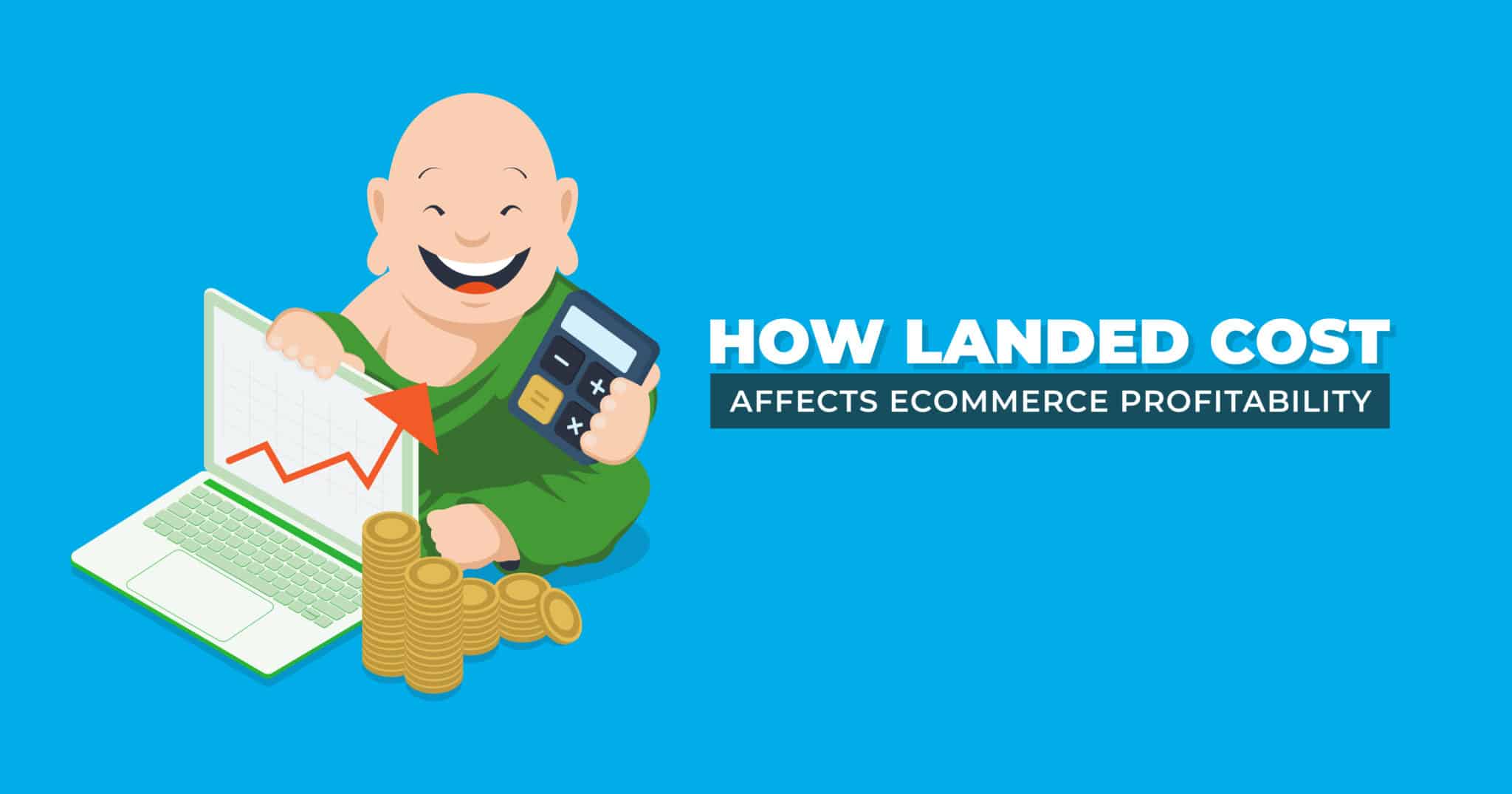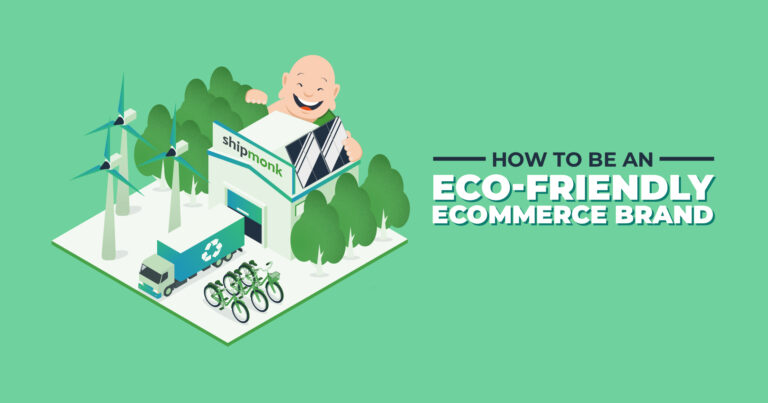How Landed Cost Affects Ecommerce Profitability
Does it feel like your ecommerce business should be more profitable than it is? Could there be hidden costs you’re not accounting for in your pricing strategy? If so, you’re not alone. One of the most common mistakes direct-to-consumer (DTC) ecommerce brands make is failing to understand and track their true costs, a.k.a. landed costs. Stick with us and you’ll learn how to calculate landed cost — and how this number affects your profitability.
What is Landed Cost?
Landed cost is the total cost of producing or purchasing a product and delivering it to a customer. It includes manufacturing or purchasing costs, shipping costs, and a potential plethora of hidden costs and fees that you may not realize are affecting your bottom line. Packaging, fulfillment services, customs duties and fees, exchange rates, licensing fees, shipping “insurance,” and payment processing fees are just some of the factors that go into calculating landed cost. And landed cost per unit must be calculated separately for every item you sell.
If your ecommerce business imports and/or exports products, landed costs affect the price you pay for imported goods, as well as the costs to ship those goods to your domestic or international customers. Shipping charges are just the beginning. Import duties, currency conversion fees, taxes, and other fees can mean the difference between making a profit or selling at a loss. That’s why understanding landed cost is key to a successful pricing strategy and making better business decisions.
Landed Cost vs. Cost of Goods Sold
Many ecommerce businesses make the mistake of assuming that cost of goods sold (COGS) and shipping costs are the only costs you need to cover when setting a price for your product. COGS is the sum of all direct costs that went into producing or purchasing a product, plus inbound shipping and inventory storage and setup costs. Landed cost includes all of these costs, as well as additional expenses that are incurred by the seller after the product is sold. This makes landed cost a far more accurate number than cost of goods sold (COGS) for setting your list price.
How to Calculate Landed Cost
The formula for calculating landed cost is as follows:
Landed Cost = Unit Cost of Product + Shipping + Customs + Risk + Handling
Unit Cost of Product: the price you paid for each unit of product, including manufacturing, inbound freight, storage, and setup at your ecommerce fulfillment center or third party logistics provider (3PL).
Shipping: This includes the costs to pick, pack, and ship a product for delivery to your customer. Shipping is typically the largest expense when calculating landed cost. Many ecommerce businesses pay a portion of the actual shipping costs to stay competitive, or pay the full cost if the order value is above a certain point.
Customs: Import regulations, taxes, fees, and licensing requirements vary by country, by season, and by the type of product being shipped. If your ecommerce business sells internationally, fees may include duties, tariffs, VAT (value added tax), broker fees, and harbor fees. Duties may be paid upfront at the point of sale (known as DDP shipping) or at the time of delivery to the customer (DDU shipping). Port charges also vary by country, and you may be charged for early, late, or canceled shipments. For more details about international fees and regulations, visit trade.gov. For duty rates on items imported into the U.S. contact your local CBP port.
Risk Protection: This includes compliance costs, quality control, and safety stock, as well as optional limited liability shipping “insurance” that protects the buyer and/or seller against package loss, damage, or theft. Sellers often take on the cost of risk protection, especially for high-value items. For international shipments, FOB (Free on Board or Freight on Board) terms designate whether the buyer or seller assumes risk. You might also want to include allowances for damaged inventory, returns, and other normal costs of doing business because these also affect profits.
Handling and Processing: These costs include special handling fees, payment processing fees (such as Shopify Payments, Stripe, or PayPal), marketplace transaction fees, bank charges, currency conversion, and surcharges.
The larger the assortment of products you sell, the more time you’ll spend calculating landed costs. Ergo, automating the process prevents errors and saves time. There are landed cost calculators such as UPS’s TradeAbility tool, which can help, but you still have to manually input the correct numbers. Larger ecommerce businesses may benefit from investing in advanced Inventory management software or ERP systems that calculate and track landed cost per unit.
Another solution is to outsource your fulfillment and shipping operations to a 3PL like ShipMonk. Our international landed cost solution integrates with your storefront to seamlessly implement DDP shipping on orders heading over US borders. This technology automatically calculates landed cost and expected delivery time so your customers know all their costs upfront and aren’t surprised. They can opt-in to receive status updates, or check your branded tracking page, which you can cleverly use to promote other products and further engage with customers.
How Landed Cost Affects Profit
Let’s say your ecommerce business manufactures leather boots and sells them worldwide. The total cost to manufacture one pair of boots and get them to your ecommerce fulfillment center is $35. Shipping costs on sold boots average $15 per unit. You set your selling price at $95 for a profit of $45.
Expected Profit (without Landed Cost)
List price: $95
Assumed Cost (manufacturing + shipping): $50
Profit: $45
Actual Profit (with Landed Cost)
List price: $95
Landed Cost (manufacturing + shipping + customs + fees + insurance, etc): $70
Profit: $25
In this example, your ecommerce business is making a profit, but much less than you planned. If you sell the boots at a discount or ship them to a country with higher tariffs, you could even lose money on the order.
Ways to Reduce Landed Cost and Increase Profits
Once you know the true landed cost of your products, you can begin to work on ways to reduce this cost. Duties and fees that are set by other countries are clearly outside of your control, but you do have some control over the two largest components that make up landed cost: manufacturing/import costs and shipping costs.
Reduce Manufacturing Costs
You may be able to find a supplier in a different country that can produce your goods for less, but be careful to compare landed cost per unit in addition to production cost. Otherwise you could end up paying more in landed costs than you save on manufacturing. You might also look into producing or purchasing the goods domestically. As international shipping costs skyrocket and supply chain issues cause inventory shortages, this has become a more viable option.
Duty-free Imports
If you’re importing finished goods from overseas to sell in the U.S., you can save thousands of dollars on import fees under Section 321. Section 321 is a program run by U.S. Customs and Border Patrol (CBP) that allows shipments valued under $800 to enter the U.S. duty free. It’s 100% compliant with CBP regulations. To take advantage of this program, you’ll need to store inventory and fulfill orders from a fulfillment center located outside the U.S. Don’t worry; that’s a lot easier than it sounds! ShipMonk, for example, operates fulfillment centers in Mexico and Canada to utilize Section 321 benefits. We can fulfill your orders, help them quickly clear customs, and ship to anywhere in the U.S., duty free. Learn more about ShipMonk’s 321 capabilities here.
Reduce Fulfillment Costs
The more orders you ship, the more streamlined and automated your fulfillment operations should be. Unfortunately, it is cost prohibitive for small businesses to invest in the technology required to realize significant savings. That’s why, as your business grows, it makes sense to partner with a tech-forward 3PL like ShipMonk. You get access to advanced ecommerce fulfillment software that integrates with your order management and inventory management systems. Meanwhile, modernized warehousing technology and automation can supercharge your fulfillment process and lower your fulfillment costs per unit as your business scales.
Reduce Shipping Costs
It’s difficult for a small business to negotiate shipping discounts if you only ship a few hundred orders a month. But no matter your size, partnering with a 3PL like ShipMonk can help reduce your shipping costs. Due to the huge volume of ecommerce orders we fulfill and ship every day, ShipMonk can negotiate discounts with all the major shipping carriers, as well as local and regional couriers. ShipMonk also has its unique Virtual Carrier Network, which makes sure your products are being shipped at the best rates within your desired delivery window. ShipMonk’s VCN also includes a 2-Day shipping option. In the post-Prime world, offering a second-day delivery service is a standard requirement, and at the same time, incredibly expensive. That’s why we introduced ShipMonk 2-Day: a direct, two-day delivery service delivering to 100% of the continental US. You can now provide your customers express shipping without the cost of express shipping premiums.
In addition, ShipMonk owns and operates 12 fulfillment centers, including eight strategically located across the U.S., and one each in Canada, Mexico, the UK and Europe. By distributing your inventory across multiple fulfillment center locations, you can offer your customers faster delivery times while reducing shipping costs. As we mentioned earlier, our international locations can help you and your customers save on import duties through Section 321. And no matter where your orders are fulfilled, you’ll have access to order and inventory management tools from one centralized, easy-to-use 3PL software platform.
If that’s not enough, ShipMonk offers delivery protection, called MonkProtect, which goes above and beyond the limited liability policies offered by shipping carriers. Most importantly, MonkProtect is an option that can be added by the customer at checkout. That way, it doesn’t affect your bottom line.
Your Landed Cost Solution
As you can see, calculating landed cost is simply a matter of adding up all the costs to make and ship a product. The tricky part is knowing what those costs are, since there are so many variables involved. Oh, and ideally you would make these calculations before you ship the order, so your customers know exactly what they’re going to be charged.
A landed-cost solution like the DDP service offered by ShipMonk makes this easy. It automatically calculates landed cost at checkout, which helps increase conversions. Merchants can track landed costs over time, and adjust pricing as needed. If you ship a lot of orders internationally, the benefits are real. You’ll have a better handle on profitability and be able to make better business decisions. Moreover, your customers will be happier too. Ecommerce brands that are using our DDP landed-cost solution report a 60% reduction in customer support issues and a 30% increase in customer conversions.
If you’re interested in a total solution that makes international shipping easier, contact ShipMonk today and leave the complicated calculations to us.



